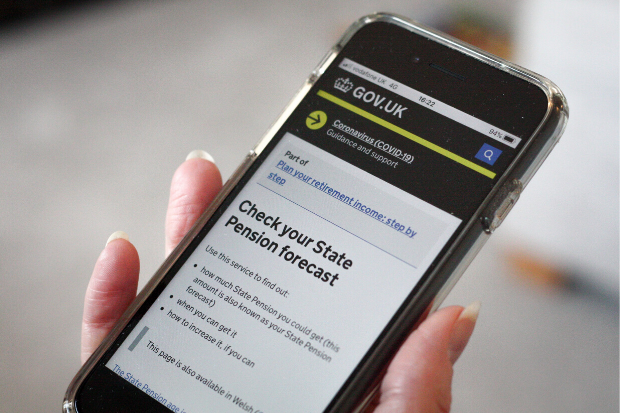A study commissioned by the department finds that government could help citizens gain confidence and connectivity after revealing that, for some benefits, almost half of service users lack internet access
A study commissioned by the Department for Work and Pensions has recommended that government provide greater support for the digitally excluded after revealing that one in six benefit recipients are not currently online.
This figure rises to almost one in two for pension credit, according to the report, for which research firm Ipsos was commissioned by the department to conduct interviews with about 8,000 service users across 10 different benefit lines.
Overall, 84% of participants are online. Of the 16% that are currently offline, 9% have never been on the internet, and 7% have previously been so but are no longer connected.
The proportion of connected users varies greatly across the range of benefits covered by the study. At the upper end, 97% of recipients of Jobseeker’s Allowance claimants are online, followed by Disability Living Allowance for Children on 95%. Other lines with more than nine in ten users online included both Universal Credit and Bereavement Support Payment on 93%, and Carers Allowance on 92%.
State Pension (86%), Personal Independence Payment (84%), and Employment and Support Allowance (81%) also had comparatively high levels of connected users.
But the picture was markedly different for Attendance Allowance and Pension Credit which, respectively, serve user bases that are just 61% and 55% online – with 30% and 36% of claimants that have never accessed the web.
Related content
- EXCL: DWP documents disclose ‘potential National Work Service’
- ‘Our current set-up is unsustainable’ – DWP modernisation project signs £1m deal to progress work on unified digital service for benefits
- ‘DWP is moving away from seeing someone as a benefit recipient – and asking how we can respond to their circumstances’
“Internet confidence was driven by customer age, level of education and social grade,” the study says. “Those who were younger – under 35 – university-educated or from higher social grades were the most confident. Long-term sick and retired customers reported lower internet confidence than other demographic subgroups. Confidence was also related to how often a customer accessed the internet, with confident users accessing the internet several times a day compared to unconfident users who were more likely to access the internet weekly or monthly. Customers with greater confidence were also more likely to access the internet outside of the home compared to unconfident users.”
For those that are currently offline, “a lack of digital confidence and no interest in going online” were picked out as the main reasons”.
“The main reason stopping DWP customers overall from accessing DWP services online was that they still preferred a level of human interaction – whether by phone or face-to-face”, the research adds.
The study recommends that the department could provide greater “targeted support” that is tailored “to the age and needs of the different benefit groups” – particularly retired people and those with a disability. Alongside this, “more intensive support levels” could be offered for those who struggle to complete digital tasks on their own, and additional help to “support previous internet users back online”.
‘Particularly challenging’
Even with extra assistance, the report concludes that continuing to offer non-digital means of communication is essential.
“Although a minority, the biggest barrier for offline customers was simply a lack of interest and fear that they lacked digital skills, and the internet was felt to be too difficult to access and use,” it says. “These were typically PC and AA (Pension Credit and Attendance Allowance) customers. Training on digital skills could help with the fear around going online. However, given the demographic profile of these customers, it would be particularly challenging to engage them all in digital services and many would simply not engage. It is important other modes to contact DWP remain available to not exclude customers.”
Channels that offer “human interaction” are particularly important in dealing with “some more complex elements of a benefit claim, including resolving payment and non-payment related queries, or disputing decisions and making complaints”.
A diversity of options may also become increasingly important for users happy to interact with government entirely digitally, according to the report.
“Typically, the majority of customers preferred to access the internet via a smartphone,” it says. “A range of different devices were favoured by different customer groups, with older customers more likely to engage with tablets. If future DWP digital services were compatible with a range of different devices, it could lead to higher take up amongst all DWP customers. The report also highlights that apps would engage younger customers and those with higher levels of digital skills. It is therefore worth DWP considering whether offering services via an app is viable.”




